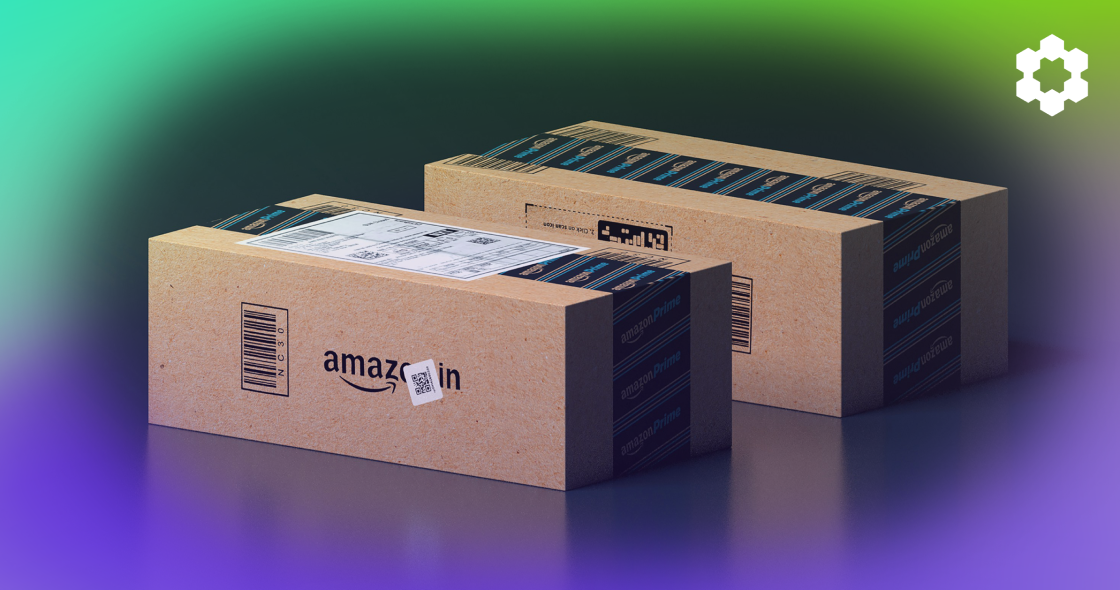Here we’re talking about two mighty, relatively new platforms shaking up how consumers shop and how Amazon sellers market and sell.
Let’s lead with definitions.
Amazon COSMO: COSMO is Amazon’s new “Common Sense Knowledge Generation” system. It underpins Amazon’s AI Search, adding all-new technology that promises to reshape the shopping experience by understanding customer behavior and intent. In short, COSMO makes Amazon’s search smarter and more intuitive.
DSP (Demand Side Platform): Demand-side platforms allow advertising buyers to reach multiple ad outlets through a single interface, automatically placing bids for ad resources from various publishers. Amazon DSP takes this to a new level, enabling advertisers to leverage the retail giant’s massive trove of customer data.
We like to be sure the new stuff is cleared up before we talk about it.
From those definitions, how do the two work together?
In what ways does COSMO fit into the DSP equation, and vice-versa?
A Match Made In Cyberspace
Both Amazon COSMO and DSP take search relevance to whole new levels.
DSP serves relevant product ads across multiple platforms. COSMO refines search results on Amazon to a level of relevance never before seen.
Together they comprise two different, yet related, technologies.
- Amazon DSP delivers targeted ads.
- Amazon COSMO delivers intent-based search results.
The upshot?
Customers are happy because they get the exact product suggestions they need – sometimes even feature suggestions they didn’t yet know they needed, thanks to COSMO (see below) – and receive them where they’re most likely to see them.
Sellers are happy because they reach customers more likely to buy and reach them where they are.
The overlap between those two functions is not insignificant and the opportunity is equally fantastic.
Tailoring your product info and messaging with the capabilities of each in mind creates a way to place your brand in a position of strength.
Seller’s Guide: Optimizing For COSMO
COSMO encodes relationships between products and the human contexts in which they’re used, such as their functions, audiences, and locations.
This new “common sense” system understands more about what the customer might look for when they search.
Example: A customer searches for “shoes for pregnant women”. COSMO, through its understanding of context, helps the recommendation engine figure out that pregnant women might be looking for slip-resistant shoes, and make suggestions accordingly.
The customer may not ask for results that include slip-resistant options, but COSMO, being wise to such things, will helpfully offer those suggestions.
Eerie, perhaps. Useful, most definitely.
What this means for Amazon sellers is that, in a nutshell, product messaging can now be (and should be) crafted with that sort of deeper understanding in mind.
Speak The Way Your Customers Do
Plain language works better than it ever has. Your product listings should speak directly to what customers are looking for. Be explicit about what your products offer and what they solve. Product functions, target audiences and usage contexts should be clear.
Be Ready
This technology will only evolve and improve. The goal is a shopping/search experience for the customer that mirrors the sort of understanding and attention they’d get if in the store talking to an associate. Be ready to adapt and evolve your listings based on new data as it becomes available. Sources like us, Carbon6, are a great place to come for the latest insights.
Encourage Feedback
The best way to continue refining your product language is to know exactly what your customers are after – the best way to find that out is to ask.
Check Your Categories
Correct product categorization is key for COSMO to generate meaningful commonsense relationships. Ensure your products are in the right categories.
In many ways, the further this technology progresses, the less we’ll craft our listings for bots, and the more we’ll craft them as if speaking to the final customer. COSMO will use that info to make its recommendations.
The more clear the better.
Understanding The Amazon DSP Equation
Amazon DSP, in effect, opens up the world.
It allows sellers to extend the reach of their brand in ways never before possible, scaling relevant advertising on and off Amazon, and placing bids in real-time across multiple ad platforms.
Sellers can opt for two campaign types:
- Link-in campaigns; where shoppers are directed from third-party sites and apps to your brand’s product detail pages on Amazon.
- Link-out campaigns; use Amazon DSP to direct audiences to your brand’s off-Amazon landing page if the ad is for a product or service that Amazon doesn’t offer.
When using Amazon DSP, there are two different management models; managed service and self-serve.
- The managed-service model requires a fee and a minimum spend and offers complete campaign management on an insertion order (IO) basis.
- The self-serve model also requires a fee, allowing you to create campaigns yourself, without required minimums.
That fantastic reach? Though it brings with it the potential to dramatically expand brand awareness and drive sales, it does come with a cost.
The Cost Of Entry
As with anything, greater results require greater investment.
The managed-service model minimum, for instance, can be high and is designed for companies that want access to Amazon DSP inventory, those that want consulting, or those with limited advertising experience.
Given the hefty price tag, it might be out of reach for some sellers.
Is Amazon DSP worth it?
Absolutely, as long as it fits within your budget. Not only is it robust in its current form, but this powerful advertising option is continually being improved. Each week, it seems we’re seeing news on the latest updates to Amazon DSP.
Amazon DSP connects you to your customers, whether they’re at work, at home, or out and about. It costs to be that omnipresent, but it’s difficult to achieve better exposure.
Expand your reach with DSP Prime. Our expert-managed advertising solution leverages Amazon’s first-party data to connect your brand with high-intent audiences across websites, apps, and streaming platforms. Get your customized growth plan now and launch in just 10 days.
But Wait, There’s More
And stay tuned. Your Guides to Greatness here at Carbon6 (a name we just gave ourselves; we’ll see if it sticks) are rolling out a brand new DSP service.
Called DSP Prime, if all goes according to plan this new service will bring the power to transform you into an advertising hero.
- Expert DSP Strategy & Execution
- Data-Powered Audience Segmentation
- Creative Assets & Production
- Transparent Reporting
Those are just a few of the things DSP Prime will include.
Here’s the link for the page where it will live:
Staying Informed
Staying informed on the latest features of Amazon’s most powerful platforms, along with how best to implement them in your operations, is almost a full-time job.
Our blogs, like this one, help. Our community is another great resource to help you navigate the Amazon landscape and find solutions.
From our site: “Our data-powered software solutions are designed to help you increase profitability, drive revenue, and operate efficiently.”
Let us know what we can do for you.








